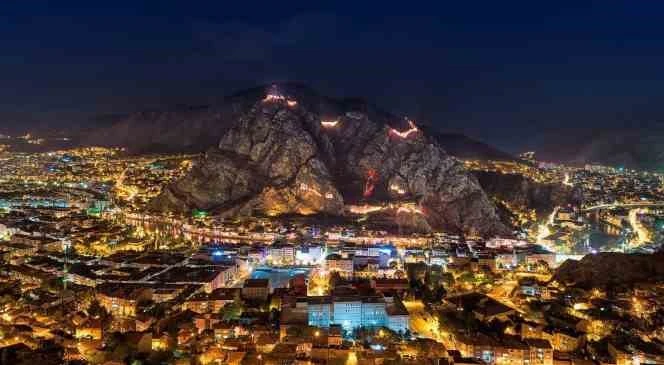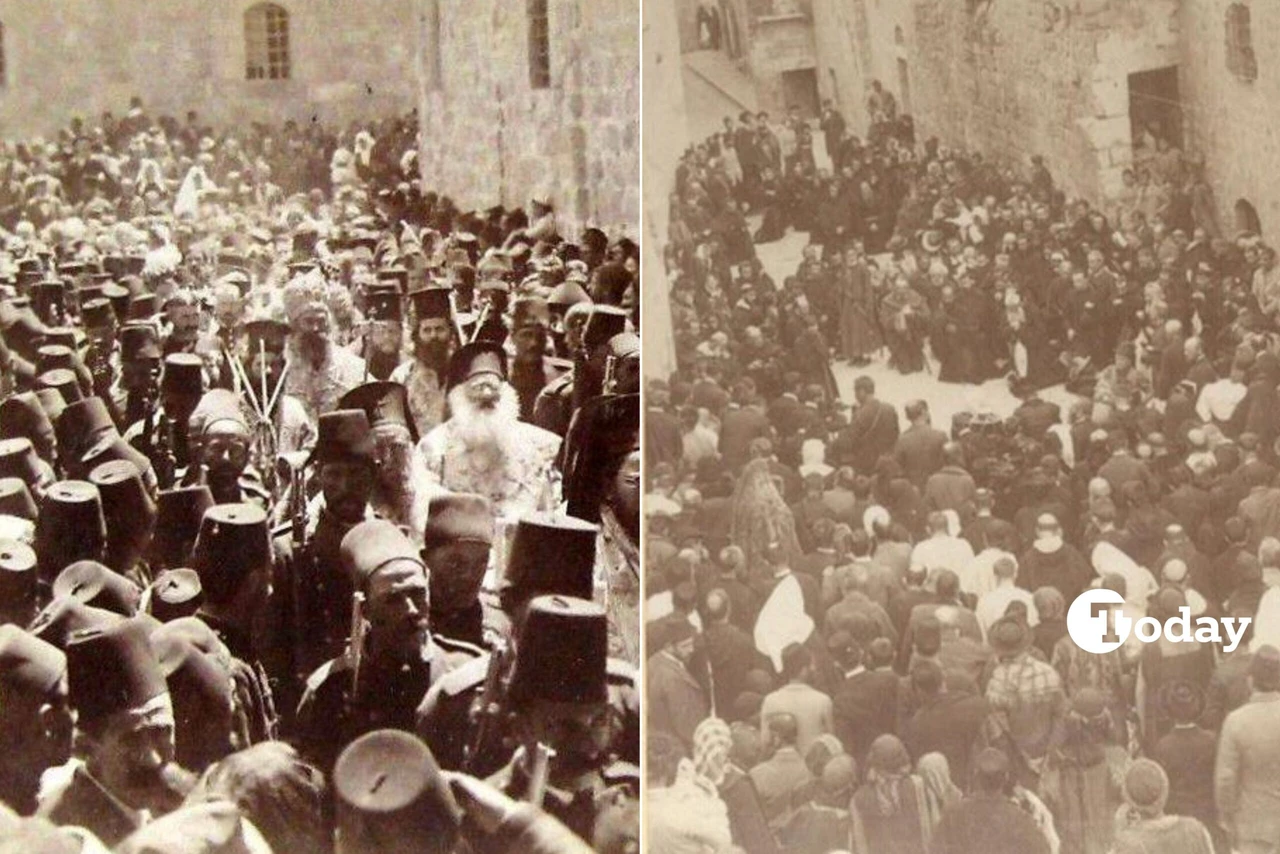Explore rich legacy of Amasya: 7,500 years of history in city of princes
 Discover the timeless beauty and rich history of Amasya through its captivating landscapes and historical sites, Türkiye. August, 2024. (IHA Photo)
Discover the timeless beauty and rich history of Amasya through its captivating landscapes and historical sites, Türkiye. August, 2024. (IHA Photo)
Amasya stands out as one of the oldest settlements in Anatolia, boasting a rich history that spans 7,500 years. Founded by the Hittites, the city has been home to numerous civilizations, including the Phrygians, Persians, Macedonians and Romans.
Under Roman rule, Amasya emerged as a vital center and maintained its role as an educational and cultural hub throughout the Ottoman Empire. The ruins at Amasya Castle and the surrounding mounds reveal that the city’s history reaches back to the Neolithic and Chalcolithic periods.
Early and Middle Bronze Age
During the Early Bronze Age (3000-2500 B.C.), the area saw intense settlement activity. Key mounds such as Ovasaray Village Hammam Tepe, Sarimese Kunbet, Keslik, and Ayvalipinar provide insights from the Chalcolithic period. By the Middle Bronze Age (2500-2000 B.C.), the area had integrated into the “Hittite Land” and established itself as a significant settlement.
Hittites to Persians
The Hittites established key settlements in the region, including Dogantepe (Zara). A bronze statue of the Hittite Storm God Tesup, dating from 1400-1200 B.C., is on display at the local museum. After Hittite rule, control passed to the Phrygians in 750 B.C., followed by the Cimmerians, Lydians, Medes, and Persians. By 547/546 B.C., it fell under Persian control and remained on the eastern borders of the “Cappadocian Satrapy” for about 250 years.
Macedonian and Roman periods
Following the defeat of the Persians at the Battle of Issus in 333 B.C., the city came under Macedonian rule. By 301 B.C., it had become the capital of the Kingdom of Mithridates, founded by Mithridates Ktistes. Under Mithridates Eupator, it emerged as a cultural center. In 63 B.C., it joined the Roman Empire and became a crucial provincial center.
Byzantine and Seljuk periods
During the Byzantine Empire, the city served as the religious and administrative center of Diospontus, playing a key role in the region’s governance and cultural life. After the Battle of Manzikert in 1071, it came under Seljuk control. The Danishemends, a local beylik, governed the region, contributing to its development. By 1175, Sultan Kilic Arslan II had fully asserted control, integrating the area into the expanding Seljuk domain.
Ottoman and Republic periods
During the Ottoman era, the city served as a “sancak”, an administrative unit, and was the center of the Rum Province. In 1555, Suleiman the Magnificent signed a treaty with the Safavid State of Iran. In the Republican era, the city played a vital role in the Turkish War of Independence. Mustafa Kemal Ataturk arrived on June 12, 1919, marking the beginning of the War of Independence. The people warmly welcomed and supported Ataturk.
Geographical location and natural beauty
Situated in the Central Black Sea Region, the city is one of Anatolia’s oldest settlements. Ancient documents and artifacts refer to it as Amesseia, Amacia, and Amaccia. The name has remained consistent throughout history. The city lies at the base of the Northern Anatolian Mountains along the Yesilirmak River, creating a harmonious living environment with its mountainous terrain serving as a natural fortress.
Cultural heritage
The 12th-century Sultan Mesud Tomb, the Mini Museum, and the Ferhat and Shirin Lovers Museum are essential parts of the cultural heritage. The historic Pontus Rock Tombs, located in the city center, add to this rich tapestry. Structures like the Castle, the King’s Rock Tombs, and the Ferhat and Shirin Water Channels highlight the cultural legacy.
Economic and social life
Unlike larger cities, it offers a quieter and more peaceful lifestyle. Agriculture plays a significant role, with local apples renowned throughout the country. Small-scale industries and handicrafts contribute to the economy. Social life remains vibrant with cultural events such as the annual International Ataturk Culture and Art Festival.
Education and science center
During the Ottoman era, the city became a key center of education and maintains this status today. The local university serves as the primary educational institution, offering various programs. Libraries and research centers in the city actively advance its scientific development

Places to visit in Amasya
The city is a paradise for history and nature enthusiasts. Key attractions include the King Rock Tombs, the local museum, Hazeranlar Mansion, the II. Bayezid Complex, and the Bimarhane. Walking along the Yesilirmak River provides a great opportunity to enjoy the city’s beauty.
With its rich history, cultural heritage, and natural wonders, the city stands out as a gem of Anatolia. For those seeking a peaceful experience combined with history and nature, away from the hustle and bustle of larger cities, this destination offers the perfect retreat.



